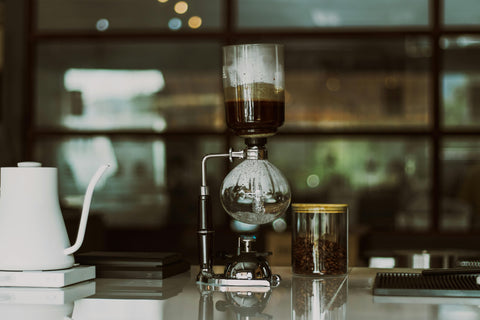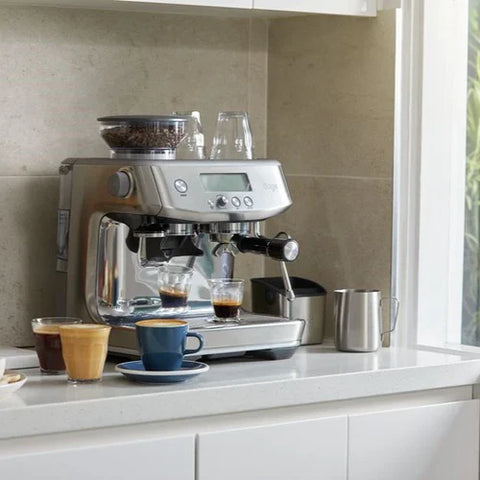
Coffee is not just a morning pick-me-up; it’s a cherished ritual for many across the UK. Whether you enjoy a strong espresso or a soothing cup of decaf, understanding how much caffeine is in your coffee can help you make mindful choices. With so many brewing methods and coffee varieties available, the caffeine content in your cup can vary widely. This guide explores these variations, helping you enjoy your coffee responsibly while staying informed.
Outline:
1. What Is Caffeine?
- Definition and natural occurrence
- Effects on the human body and mind
2. Average Caffeine Content in a Cup of Coffee
- Typical caffeine levels in milligrams
- Standard cup sizes in millilitres and how they affect caffeine content
3. Factors Influencing Caffeine Content
-
Coffee Bean Types
- Arabica vs. Robusta beans
-
Roast Level
- Light vs. dark roast differences
-
Brewing Methods
- Drip, espresso, French press, and cold brew
-
Serving Size
- Impact of different serving sizes
4. Caffeine Content by Brewing Method
- Filtered Coffee: Classic and balanced
- Espresso: Small but potent
- French Press: Full-bodied and slightly stronger
- Cold Brew: Naturally sweet and high in caffeine
- Instant Coffee: Quick and milder in caffeine
5. Decaffeinated Coffee: Is It Truly Caffeine-Free?
- Overview of decaffeination processes
- Residual caffeine in decaf coffee
6. Comparing Caffeine in Popular UK Coffee Chains
- Caffeine levels in coffee from chains like Costa, Pret, and Starbucks
7. Health Implications of Caffeine Consumption
- Recommended daily intake in milligrams
- Benefits of moderate caffeine consumption
- Risks of excessive intake
8. Caffeine Sensitivity and Individual Differences
- Factors affecting caffeine sensitivity
- Who should limit caffeine consumption
9. Tips for Managing Caffeine Intake
- Strategies to reduce caffeine consumption
- Alternatives for caffeine-free enjoyment
10. The Role of Caffeine in Coffee’s Popularity
- Cultural significance in the UK and beyond
- How caffeine impacts coffee’s global appeal
Main Sections
What Is Caffeine?
Caffeine is a natural stimulant found in coffee, tea, and cacao plants. It works by blocking adenosine, a compound that makes you feel tired, resulting in increased alertness and energy. Caffeine affects people differently, with benefits like enhanced focus and potential risks such as disrupted sleep if consumed in large amounts.
Average Caffeine Content in a Cup of Coffee
In the UK, a standard mug (around 240 ml or 8 oz) of brewed coffee typically contains 95 milligrams of caffeine. This can range from 70 mg to 140 mg depending on factors like brewing method and coffee type. Smaller servings, such as a 30 ml (1 oz) espresso, usually contain around 63 mg of caffeine, but their concentrated nature means they deliver a stronger hit.
Factors Influencing Caffeine Content
Type of Coffee Beans
Arabica beans, favoured for their smooth flavour, contain about 1.2% caffeine, whereas Robusta beans, known for their bold taste, have approximately 2.2% caffeine.
Roast Level
The roast level—light or dark—has minimal impact on caffeine content when measured by weight. However, by volume, light roast beans can deliver slightly more caffeine as they are denser.
Brewing Method
Brewing times and methods significantly affect caffeine content:
- Filter Coffee (240 ml): Around 95 mg.
- Espresso (30 ml): About 63 mg.
- Cold Brew (240 ml): Typically higher at 150-200 mg due to prolonged brewing.
- Instant Coffee (240 ml): Lower caffeine, averaging 60-70 mg.
Serving Size
Larger servings naturally contain more caffeine. A 480 ml (16 oz) coffee from a high street chain may have double the caffeine of a smaller serving.
Decaffeinated Coffee: Is It Truly Caffeine-Free?
Decaffeination removes most caffeine, but trace amounts remain. A typical 240 ml mug of decaf coffee contains 2-5 mg of caffeine, a fraction of regular coffee but not entirely free of it.
Caffeine Levels in Popular UK Coffee Chains
- Costa Coffee: A medium Americano contains approximately 241 mg of caffeine (medium size, 350 ml).
- Pret A Manger: A 350 ml filter coffee has around 271 mg.
- Starbucks: A grande Americano (470 ml) contains about 225 mg of caffeine.
Health Implications of Caffeine Consumption
The NHS recommends adults limit caffeine to 400 mg daily—roughly four 240 ml mugs of brewed coffee. Moderate consumption offers benefits like improved focus, but excessive intake can lead to anxiety, sleeplessness, and increased heart rate.
Caffeine Sensitivity and Individual Differences
Caffeine sensitivity varies. Pregnant individuals, for example, are advised to limit intake to 200 mg daily. Genetic differences also play a role, with some people metabolising caffeine more slowly than others.
Tips for Managing Caffeine Intake
- Gradually reduce consumption to prevent withdrawal symptoms.
- Opt for smaller servings or weaker brews.
- Choose decaf or herbal tea alternatives for late-night drinks.
Conclusion
Understanding how much caffeine is in your coffee empowers you to enjoy it responsibly. From the type of beans to the brewing method, each factor plays a role in determining caffeine content. By choosing wisely, you can enjoy coffee as part of a balanced lifestyle.
FAQs
-
How much caffeine is in a shot of espresso?
About 63 mg in a standard 30 ml shot. -
Does dark roast coffee have more caffeine than light roast?
By weight, the caffeine content is similar, but light roast beans are denser. -
How much caffeine is in decaf coffee?
A 240 ml cup contains 2-5 mg on average. -
Which brewing method has the most caffeine?
Cold brew typically has the highest caffeine due to longer steeping times. -
What is the safe daily caffeine limit?
Up to 400 mg for most adults, according to the NHS.









